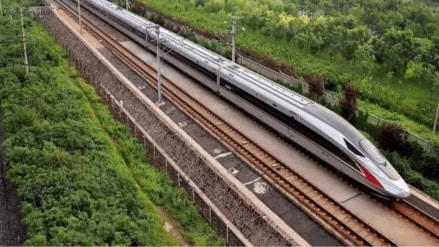Railway Minister Ashwini Vaishnaw on Saturday visited the site of the undersea tunnel for the Mumbai-Ahmedabad High-Speed Rail Corridor, commonly known as the bullet train project. Vaishnaw expressed his satisfaction with the progress of the multi-billion-dollar project, noting significant advancements in its construction.
21-Kilometre Tunnel with 7 Kilometres Under Thane Creek
The 21-kilometer-long undersea tunnel, which includes a seven-kilometer stretch beneath the Thane Creek, will link the Bandra Kurla Complex (BKC) station in Mumbai to Shilphata. This undersea tunnel is a pioneering project, being the first of its kind in India.
Vaishnaw highlighted that the technology and design of the tunnel will allow trains to travel at speeds of 250 kilometers per hour, making it faster than other under-river tunnels, such as Kolkata Metro’s. The minister assured that the design prioritizes environmental protection, ventilation, and lighting for the safety of commuters.
“The construction work on the 340 kilometers of the project is progressing well,” Vaishnaw said during his visit to Ghansoli, Navi Mumbai. He further added that the ongoing construction of bridges over rivers and station infrastructure is advancing steadily. The BKC station, an engineering marvel, will feature 10 underground floors and seven above-ground levels, he noted.
The Mumbai-Ahmedabad bullet train route, spanning 508 kilometers with 12 stations across Maharashtra and Gujarat, is expected to revolutionize the way people travel between the two cities. The stations along the corridor will drive urban development, reduce travel time, and increase commuter productivity.
The high-speed train project is not just a transportation initiative; it’s an economic integration project that will elevate India’s infrastructure and stimulate growth, Vaishnaw stated. He also commended the role of Indian engineers in ensuring the project’s success, calling it a source of pride for the nation.
With an estimated cost of Rs 1.08 lakh crore, the Mumbai-Ahmedabad HSR project, supported by Japanese railway technology, is scheduled to be completed in the near future. The completion of this project will further boost the economies of the cities along the corridor, particularly benefiting Mumbai and Ahmedabad.
